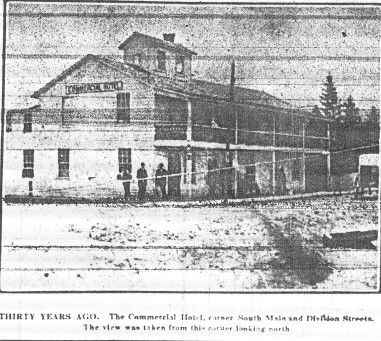[Welland Tribune, 16 March 1894]
March 1894-As taken by special census taker Elias H. Burgar.
Ward 1-375
Ward 2-544-919 east side
Ward 3-424
Ward 4-508-932 west side
Total: 1851
The above does not include the population within the gaol, which amounted to 41 yesterday. There was no attempt made to take any except bona fide residents of the town-the market, trains etc., were not drawn upon as has been done elsewhere in times past.
EFFECTS OF THE “COMPRESSORS”
[Welland Tribune, 2 February 1894]
Mr. Leonard McGlashan returned on Saturday night from the gas fields of Ohio and Indiana, his pockets stuffed with evidence that the gas compressors in that part of the world were nothing more nor less than suction pumps-and he says no person pretends to deny that fact. Among the affidavits secured by him are those of the officers of some of the leading gas companies and their statements are right to the point and unmistakable in their meaning. Mr. McGlashan was driven to a point on the line four and one-half miles from the gas pump, and when the plug was removed it required force to lift it from the hole, the suction forming quite a resistance. One dare not place their hand over the hole in the pipe. Wells in the vicinity that formerly had a pressure of 80lbs. had lost all their pressure and now shewed a vacuum of 11 lbs. And these wells were not on the pipe line at all, but had the gas drawn from the deposits in the sand. Mr. McGlashan said he found a vacuum from 1 to 15 lbs. on the wells in the neighborhood where the pumps were working. We presume the evidence will be held before the government with the view of obtaining legislation to stop the compressors from working in Canada. The residents of the Buckeye State treated Mr. McGlashan to the best their land could produce, and no possible courtesy was wanting. He can scarcely find words to express his gratitude to these gentlemen. Although a stranger, without credentials, they used him like a king, and if ever the opportunity ever occurs the Americans will find Mac’s latch string on the outside to one and all of those whom he met on his tour of inspection.

[Welland Tribune, 17 August 1894]
At half past three o’clock Wednesday morning the alarm of fire was sounded. The scene of the conflagration was the blacksmith shop on Division street, next east of the Commercial hotel, owned by Mrs. Cafferty and used by Mr. Gillam, blacksmith. As the building was an open frame structure the fire got a good start before discovery or at least before the alarm was sounded.
As nearly as is known, the hosemen began to play upon the fire in six minutes after the first tap of the ball.
By this time, however, the flames had extended to the barn and stables of Mr. T. Roach of the Commercial, making a terribly hot fire. Fortunately, however, almost a dead calm prevailed at the time, and although Dr. Schooley’s barn was all but ablaze, and the roof and sides of the hotel smoked and cracked dangerously, the two streams of water, one on either side, confined the flames to the blacksmith shop and the stables. Even an outbuilding belonging to the hotel property alongside the barn, to the south, was saved.
The blacksmith shop is of course a total loss, except perhaps the sills. It was owned by Mrs. Cafferty, and was valued at about $150. Insured for $50.
Mr. Roach’s drive shed was burned, and the barn is a wreck. The horse was removed by Mr. Roach himself just as the flames burst into the stall. Both Mr. Roach and the horse got singed a little, but not seriously. Tom threw a halter over the horse’s head; put his arm round his neck, and the intelligent animal allowed himself to be led out. As soon as out the door, Mr. Roach had to let him loose, to look after the safety of his family. The horse ran a distance, came back to the stables as near as he could approach for the heat, and then struck a bee line gallop for the race track. Mr. Roach’s loss is between $500 and $600 on buildings, on which there is an insurance of $200, in addition he lost a buggy, new set of harness, three hogs, quantity of hay, oats, &c. His loss will foot up to between $700 and $800, less the insurance. He will rebuild the stables at once.
Dr. Schooley’s line fence was partly burned and one side of this stable was scorched.
It is possible the fire may have been caused by s spark smouldering from the day before. It is said the fire bench had been filled in under with sods, and possibly these dried out so as to burn like peat, the fire eventually reaching the floor. Either that or the fire was the work of an incendiary. Dr. Schooley had notified the owner of the shop the day before the fire that it was not properly protected from fire.
We cannot close our report without again complimenting the fire department on the prompt and efficient service rendered. As usual in this town, the loss was restricted to the smallest margin possible under any circumstances after the start the fire had.
Fire: 15 August 1894
 Subscribe..
Subscribe..
